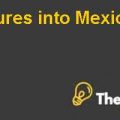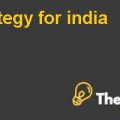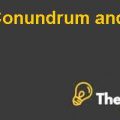
INTRODUCTION
Ericsson, one of the leading company in the telecommunication business world, was founded in 1876 by Lars Magnus Ericsson, as a telegraph equipment repair shop in Stockholm. Ericsson has two core businesses such as Networks and global services as well as multimedia and other activities. The main offices and R&D of the company are in Stockholm, which comprise of 108,000 employees in 180 countries. The basic goal of the company is to deliver quality products and services to its customers while maintaining the corporate culture and values. After gaining maximum market share in Sweden, Ericsson proposed a strategy to expand its business globally, which includes China, Russia, and Mexico.
During the era of the 1990s, the company launched many innovative products that help the company to gain customers and competitive advantage. However, in the year 2000, the company faced multiple challenges and issues because of high competition in the mobile telecom industry. Moreover, the high competition led the company to face financial and operating losses in 2001. Furthermore, Ericsson faced next crisis in the year 2006-2007 when Huawei had appeared on the world scene and gave a tough competition to the market leaders in telecommunication business.
Huawei, one of the world’s largest information and communication technology producers, was founded in 1988 by Ren Zhengfei. The company operates in China, where it is headquartered in Shenzhen and comprises of 95,000 employees. The goal and objective of the company are to deliver innovatively and value-added services to its customers and to maximize the customers’ satisfaction in the long run. The company provides mobile network, broadband network, and IP-based network to its customers, with low-cost strategy. Moreover, Huawei’s corporate culture is based on full and thorough employee participation at all levels.
Huawei initiated numerous winning strategies, which led the company to compete with existing market leaders such as Ericsson, Cisco, and Nokia. From 1995, the development strategy of the company benefited from strong internal finance, which the company helped by expanding its market domestically as well as an employee shareholding scheme. A major strength of the company is its R&D department that is mainly focused on heavy reverses engineering. Huawei is no longer a later comer firm in the cellular industry because the company has already gained market share nationally as well as internationally.
PROBLEM STATEMENT
According to the case, mobile revolution led the telecommunication industry to face multiple challenges and issues regarding advanced technology, innovation, cost-effective, and value-added services. Ericsson, one of the leading company, failed to maintain its global strategy due to huge competition, innovative and creative products, product line expansion, lack of R&D department, and lack of human resource department.
On the other hand, Huawei started its operations in 1988 and gave tough competition to the market leaders in the telecommunication business, especially the Foreign Frontier Firms (FFFs) competitors. Huawei surpassed Ericsson to become a mobile leader not only because the company’s growth rate, but also the company has a much broader product line. The Huawei product line provides more opportunities to the company for business extension and upgrading.
Moreover, Huawei is no longer treating Ericsson as a market leader and chasing an objective because Ericsson follows its traditional way to supply the telecom equipment specializing in mobile services. However, the mission of Huawei is become a covering all next generation ICT company with an enormous product portfolio. Moreover, the objective of the company is to become a leading information and technology service provider. Furthermore, Huawei delivers high-tech and innovative products to its customers at low cost, which grabbed the attention of the FFFs competitors. However, Cisco, the main FFF competitors of Huawei, sued the company for multiple violations of its patents.
Nonetheless, it is important to conduct an in-depth analysis of both the companies, to understand their global and technology strategy. Moreover, it is important to analyze the reason of Ericsson’s failure and Huawei’s successful strategy. This case is about technology and global strategy and execution therefore, it is important to conduct a SWOT analysis, which helps to drive possible solutions and recommendations.
CASE ANALYSIS
SWOT ANALYSIS
Strength
A major strength of Ericsson and Huawei is that both are well ahead of their closest competitors such as Nokia Siemens Networks and Alcatel-Lucent. Huawei proposed a technological strategy that included to use, assimilate, adapt, and change existing technologies and create new advanced technologies and develop new process and procedures..................
This is just a sample partial case solution. Please place the order on the website to order your own originally done case solution.













